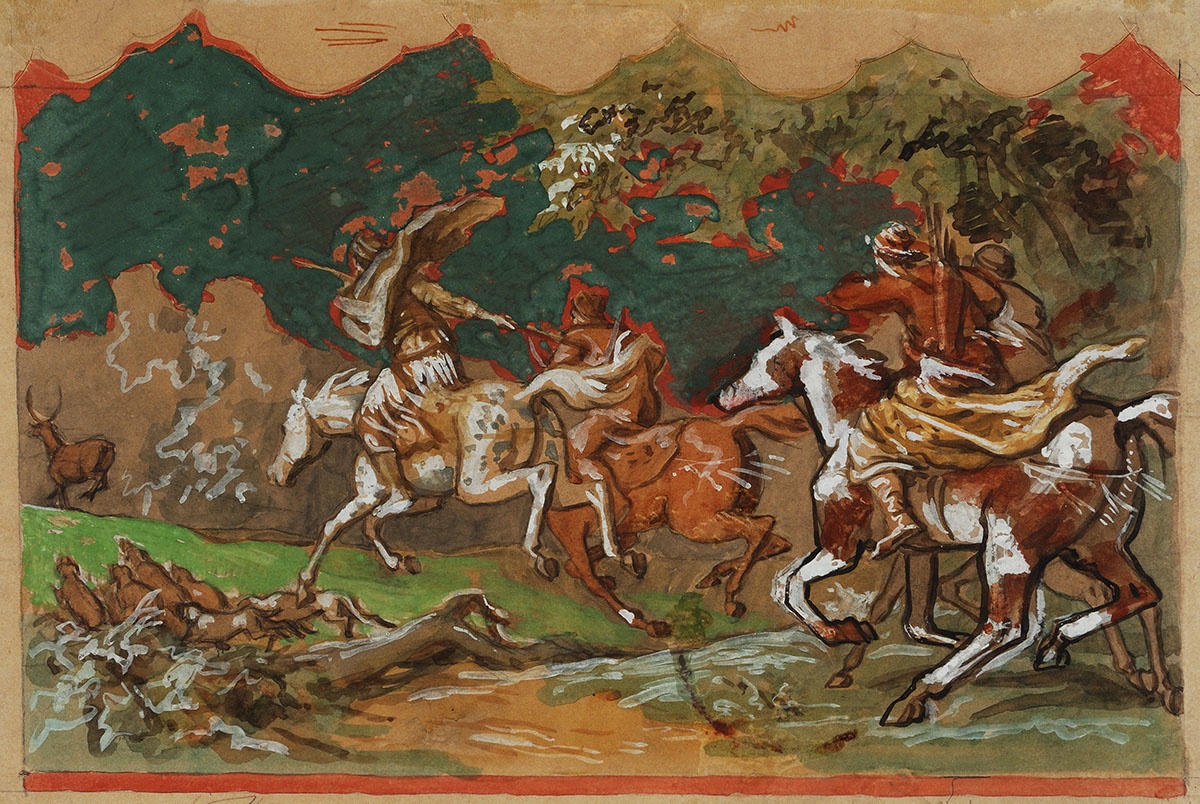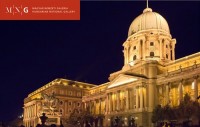Already at the end of the 1880s, the president of the National Committee of Listed Buildings, Gyula Forster, visited Székely to commission him to paint the frescos for the Golden House of the Vajdahunyad Castle in Transylvania. Székely launched into designing the frescos with much zeal, but due to protracted building work, then his illness and death, his plans were not implemented. To paint the hall, he chose a phase of the legend concerning the origins of the Hungarians, which was also put into verse by the poet János Arany: the tale about the Miraculous Stag, the sixth song in the section Death of Buda in the Trilogy of Csaba. Székely intended to summarize the story in eight paintings.The artist used the experience of his extensive studies of horse movements when rendering the pursuit of the miraculous stag. The theme provided him with the opportunity to create a novel way of expression, whereby the symbolism of old Hungarian history could be fused with the motifs of old Hungarian art and this applied to all the works of the cycle.
en

